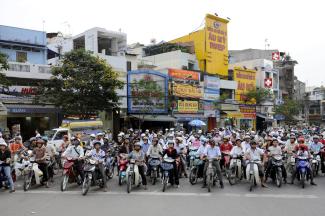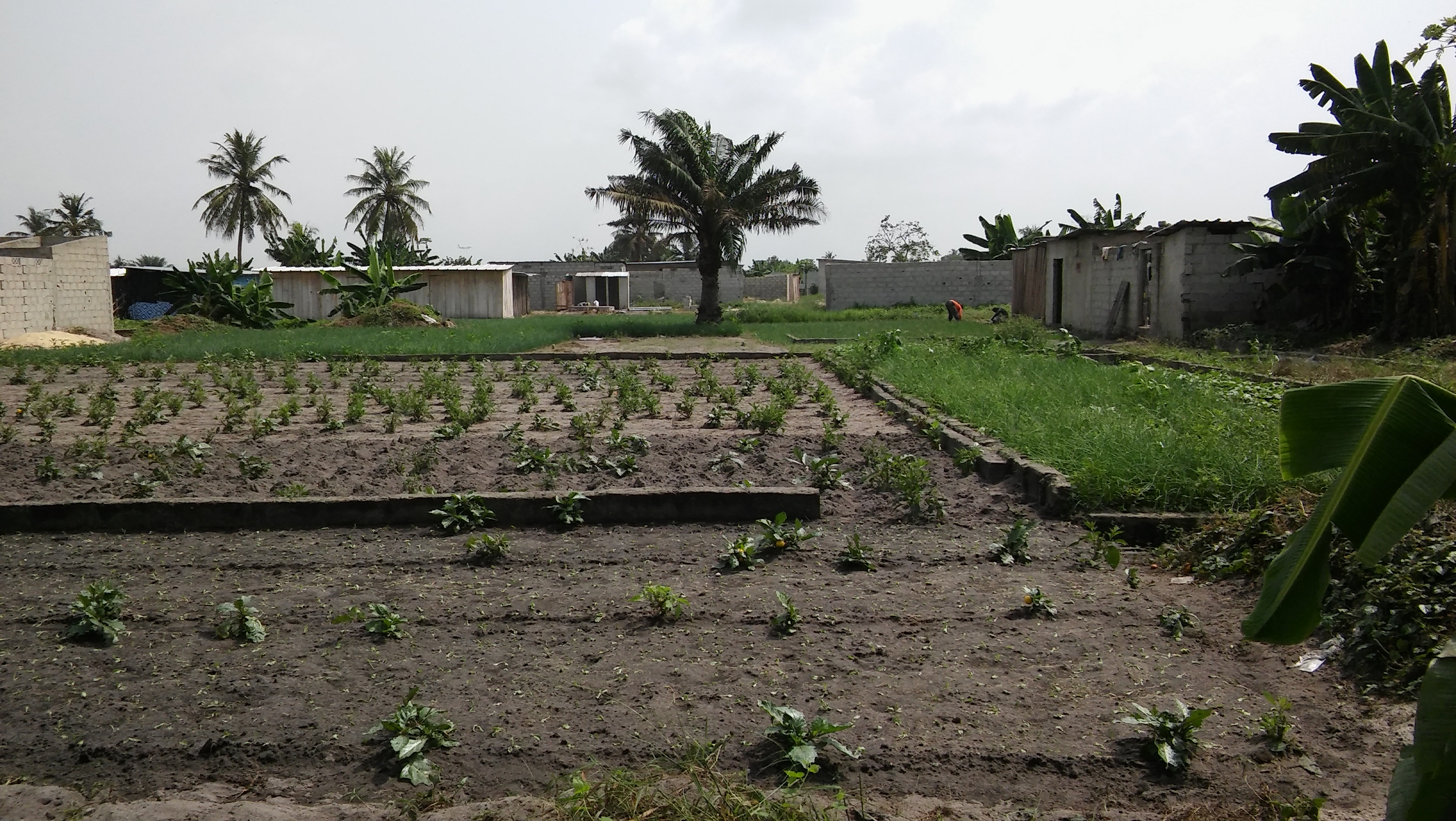Traffic
Imminent gridlock
By Hans-Heinrich Bass and Thanh Trung Nguyen

In Hanoi, 80 % of road users ride mopeds. The Vietnamese call their moped “xe máy”. It is more powerful than its German counterpart and can carry a family of four. It is even used as a goods vehicle. The top speed is 90 kilometres an hour – but not in Vietnam’s cities. In urban areas, xe máys rarely move faster than 16 kilometres an hour because of increasing traffic density. Congestion costs money and time, exhaust fumes and noise cause illness, and sluggish traffic slows down economic growth. Only 10 % of road users travel by bus.
Twenty years ago, bicycles dominated urban streets. The cities, moreover, had good bus networks back then. Hanoi even had a tram system. But the government stopped subsidising local public transport in the late 1980s, and rising incomes have allowed a growing number of people to switch to mopeds.
Today, public transport services play only a minor role in the agglomerations of Hanoi and Ho Chi Minh City (HCM City). Many streets are very narrow, so it is impossible to provide separate lanes for public transport. Buses are often held up in traffic, and – in contrast to other countries – private mini buses never really took off.
Those who don’t have mopeds of their own, increasingly rely on moped taxis and car taxis. In smaller towns like Da Nang, Hai Phong and Can Tho, public transport services have been all but discontinued.
Almost every household has a moped in HCM City and Hanoi today. Rising incomes, moreover, are boosting interest in cars. According to econometric studies, every percentage point of economic growth nearly leads to a one-percent increase in households’ car ownership.
Accordingly, the number of private cars registered in HCM City is currently growing at an annual rate of 10 %. If that trend continues, this city of about 10 million people will have around one million cars on its streets in 2015. The average speed during the evening rush hour would then fall to six kilometres an hour for cars and 10 kilometres an hour for mopeds. The average motorist would spend half of each ride stuck in jams.
Mopeds require more road space than bicycles, and cars need even more space. But the inner city roads of densely populated cities like Hanoi and HCM City can be extended by only two percent
a year at most. In terms of traffic snarl-ups, it will not make much difference that some roads are being turned into dual carriageways with little regard for local housing residents. All experts agree that traffic-reducing urban planning is ultimately needed, but Vietnamese and European experts disagree on what kind of built environment will serve that purpose best.
Coherent urban planning
The Vietnamese government wants to lighten inner city traffic by reducing the number of people living in those areas. Its policy is to build workers’ housing near business parks and industrial zones, move universities to suburban sites and promote the creation of satellite developments. By the year 2020, there will be around 50 such satellite townships at distances of 10 to 20 kilometres from Hanoi’s centre, and another five major satellite cities farther afield. The idea is that the suburban settlements will absorb the anticipated population growth.
European experts take the view that these plans fail to consider an important issue: suburbs depend on urban centres for jobs, shopping and entertainment. The European experience tells us what suburban sprawl results in, and European experts therefore warn that the plans currently drafted in Vietnam at present will lead to new traffic flows. European city planners recommend densely populated settlements with short distances. Their idea of urban future is compact cities with clearly distinguishable centres and a mix of different functions (such as residential, commercial and administrative purposes). They point out that Hanoi’s Old Town is actually like that still today.
Investment strategy
Vietnamese planners want to prevent gridlock with a massive upgrade of local public transport. In Hanoi, sights are set on reducing the share of mopeds in the total traffic volume to 30 % by 2020 and raising the share of buses and trains to 45 %. In Hanoi, the authorities are working on the development of a subway and suburban rail network. In HCM City, the first two lines of a new light-rail system are expected to account for a third of the total traffic volume in 2015. The city is building its first underground line. Furthermore, both cities plan to invest in lots of new and fuel-efficient buses.
The Vietnamese government has identified poor infrastructure as one of three major obstacles to further economic development (the other two are endemic corruption and the lack of skilled labour). In the next few years, it wants to invest € 13 billion a year in infrastructure development. That sum corresponds to 15 % of GDP. Vietnam needs massive infrastructure investments in many areas however. Current bottlenecks do not only affect urban traffic, but interurban roads, ports and airports as well. The telecommunications networks need to improve too.
Moreover, issues of jurisdiction and coordination mean that huge infrastructure projects will take a long time. In Hanoi, for example, planning responsibility for two metro lines resides with the local People’s Committee, while the planning for three more lines is in the hands of the Transport Ministry and the Railway Authority. In spite of the government’s growing willingness to allow foreign direct investment in infrastructure and the World Bank’s preparedness to support public transport development with money from its Climate Investment and Clean Technology Fund, it will be impossible to solve all problems with a fast and ambitious investment programme.
Innovative approaches
For many Vietnamese, the xe máy is not just a vehicle for getting from A to B; it also means personal freedom. Cruising the streets in the evening is a popular pastime. Appeals alone will not change that behaviour. Genuine economic incentives and attractive alternatives are needed.
Planers’ attempts to prevent traffic gridlock have to meet two requirements: they must be expenditure-neutral and provide incentives to change personal habits fast. The solution could be to introduce a city toll scheme – like the electronic road pricing system that has been operational in Singapore since 1975 or the congestion charge that London introduced in 2003. Relevant schemes can be implemented with comparably simple technologies (see background information on the right).











